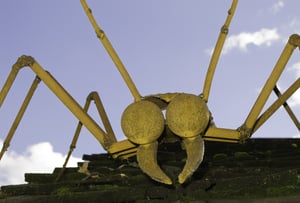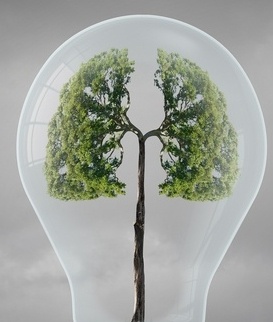If you find yourself having frequent sneezing fits, especially if they’re accompanied by watery eyes, a runny nose, or a cough, then it could be a sign of excessive allergens or pollutants in your home.
When we think of pollution, we typically think of the outdoors. However, indoor pollution can be up to five times higher. If left unchecked, it can eventually cause serious allergies and chronic conditions like asthma.
Biological Pollutants
Biological pollutants are one of the most common causes of sneezing. They include pet dander, pollen, dust mites, mold, and cockroaches.
To keep cockroaches at bay, avoid leaving food or dirty dishes around and empty trash cans regularly.  Control pet dander with brushing and bathing, and vacuum floors often. Keep pets off the furniture and out of the bedroom if possible.
Control pet dander with brushing and bathing, and vacuum floors often. Keep pets off the furniture and out of the bedroom if possible.
Dust mites and mold thrive in humid, dark environments, so a cool, dry home is key to controlling them. Use air purifiers and dehumidifiers in high-moisture areas, wipe down condensation, keep surfaces clutter-free, and wash fabrics and upholstery in hot water. If pollen is particularly potent in your area, air out the home using your ventilation system instead of opening windows.
Chemicals
Chemicals, particularly those found in cleaning products or synthetic fragrances, can cause irritation to the nasal passage. It’s virtually impossible to eliminate chemicals from your home altogether, but there are many safer options on the market today.
 Look for organic or eco-friendly cleaning products, or consider switching to natural solutions like lemon, vinegar, or baking soda. Replace your synthetic perfumes with those from organic brands and switch air fresheners and plug-ins for essential oil diffusers.
Look for organic or eco-friendly cleaning products, or consider switching to natural solutions like lemon, vinegar, or baking soda. Replace your synthetic perfumes with those from organic brands and switch air fresheners and plug-ins for essential oil diffusers.
The harshest chemicals tend to be found in pesticides, but even these products are becoming safer. Research natural repellants like peppermint oil, shop around for a minimally toxic pesticide, or contact an exterminator that specializes in safer solutions.
Cigarette Smoke
Cigarette smoke contains more than 3000 chemicals, most of which irritate your nose and throat. Over time, those chemicals can seep into the furnishings, walls, and floors of your home. Even if you’re a non-smoker, you can suffer indoor air pollution thanks to past occupants having smoked.
Always smoke tobacco, e-cigarettes, or vapes outside. Get rid of any lingering chemical residue by replacing old carpets, wallpaper, and/or paint. Wash the walls and ceilings and use a sealing primer before re-covering.
When to Call a Professional
If you’ve taken steps to reduce indoor pollutants but you’re still sneezing, it could be an issue with the air circulation in your home. Dust and mold can often hide in ducts, which means that they’re circulated throughout the house.
At Geiler, we’ve been helping homeowners to improve their indoor air quality for 130 years. We can assess your heating, cooling, and ventilation systems to minimize pollution and restore clean air flow in your home. Find out more about Indoor Air Quality.


